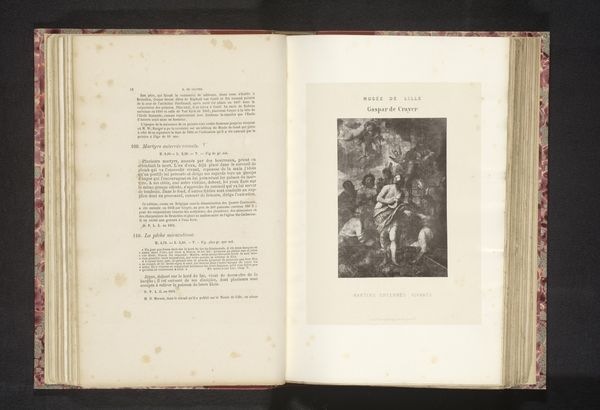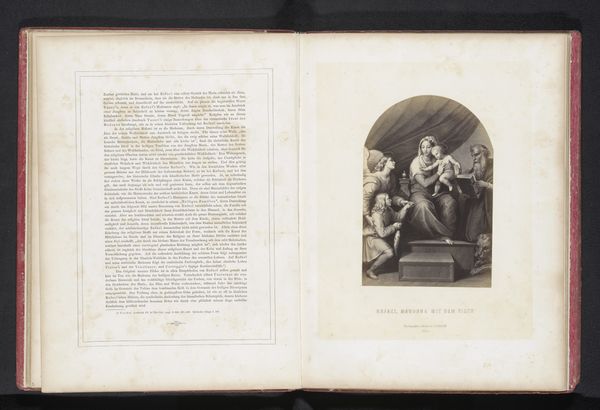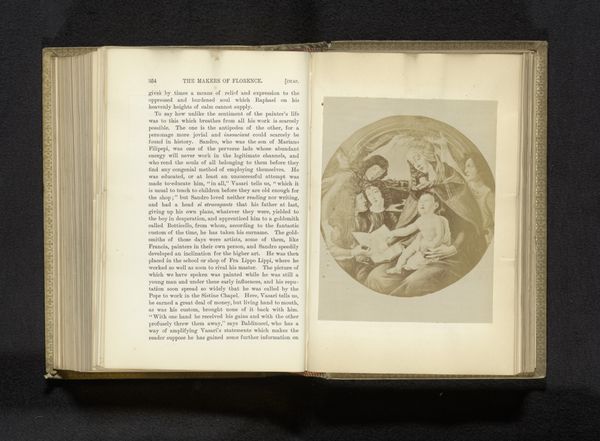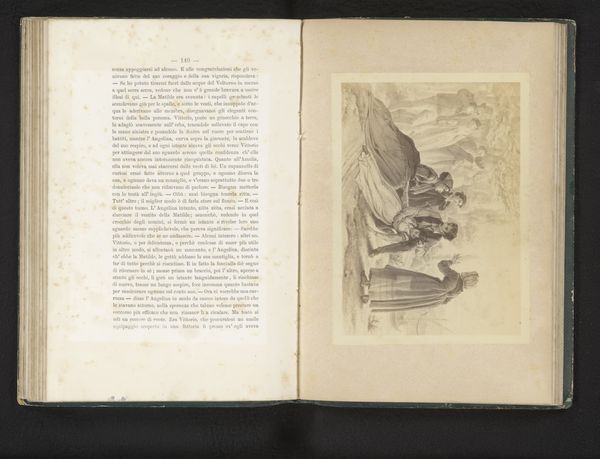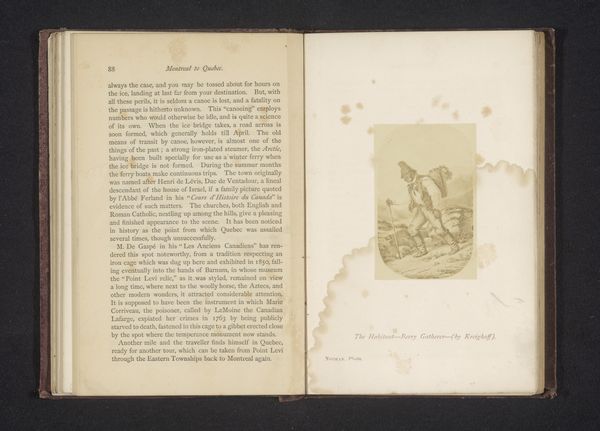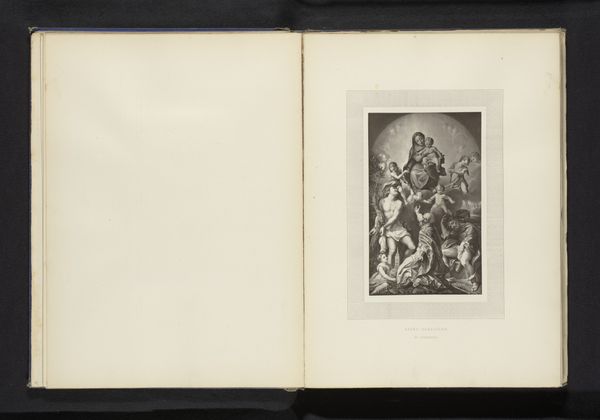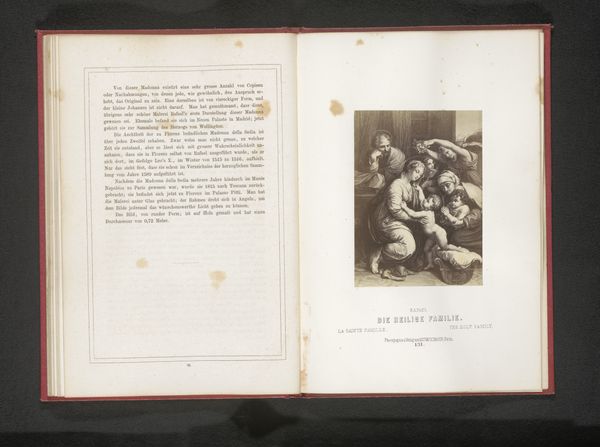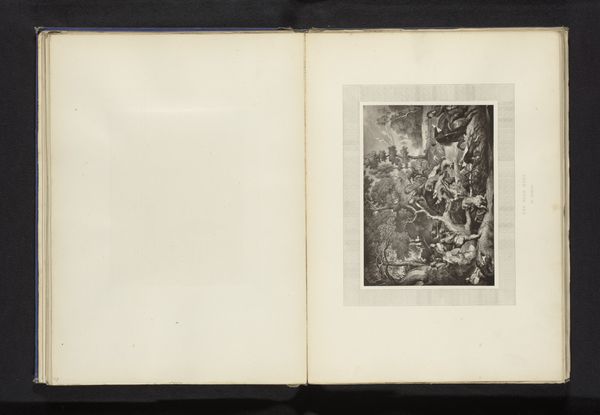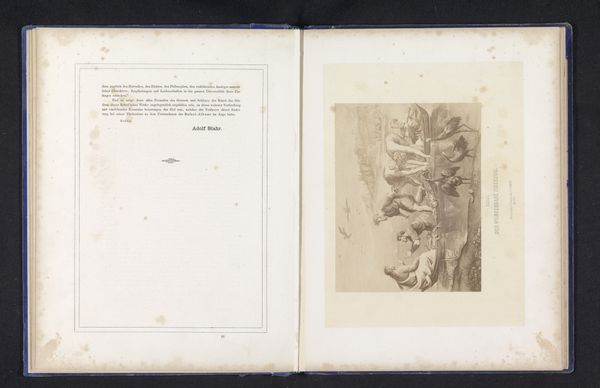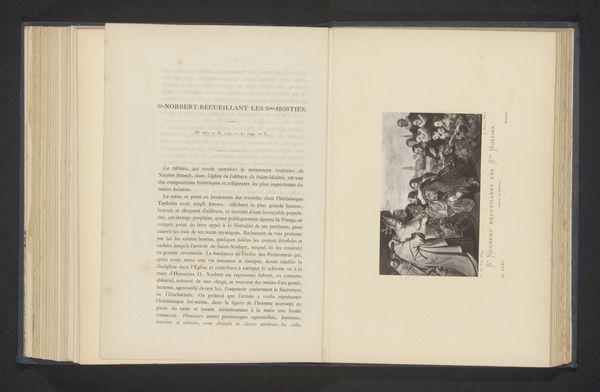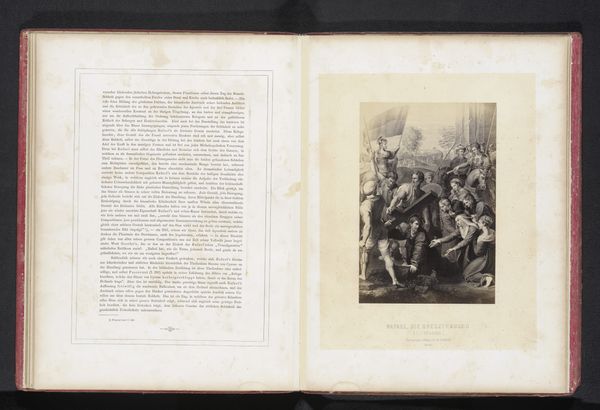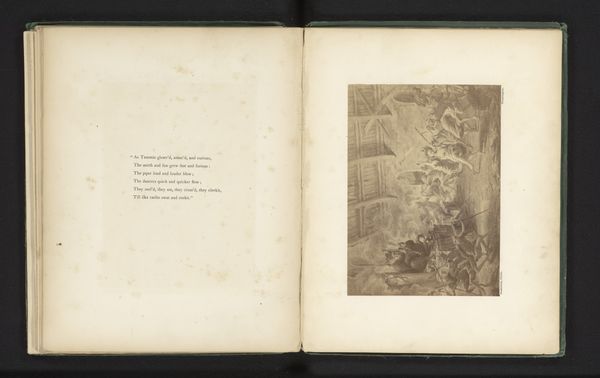
Fotoreproductie van een prent naar het visioen van Ezekiel door Rafaël before 1861
0:00
0:00
print, etching, paper, engraving
#
allegory
#
narrative-art
# print
#
etching
#
paper
#
11_renaissance
#
coloured pencil
#
engraving
Dimensions: height 187 mm, width 136 mm
Copyright: Rijks Museum: Open Domain
Curator: What strikes me immediately about this etching is its dynamism. The upward surge of figures and the billowing clouds create such a strong sense of ascension. Editor: Indeed. The print is a reproduction of Raphael’s depiction of the vision of Ezekiel, created sometime before 1861 by Gustav Schauer. We should contextualize it, noting how reproductive prints allowed Raphael’s work—originally a fresco—to circulate widely. What do you make of that original cultural impact? Curator: These reproduced images, like this engraving on paper, brought Raphael’s visions to a broader public, influencing artistic and religious imaginations for generations. Think about how this scene from Ezekiel, depicting God enthroned and surrounded by symbolic creatures, speaks to ideas of divine power. Editor: The four creatures – lion, eagle, ox, and angel – directly reflect symbols found across cultures denoting strength, royalty, sacrifice, and wisdom. Placing Ezekiel's vision in parallel to that imagery creates an interesting cultural fusion. It visually condenses power across belief systems. Curator: Absolutely, Gustav Schauer uses engraving techniques that convey Raphael’s figures’ texture and volume. In doing so, his reproduction makes it available, reshaping art appreciation and study during that period. Do we think that makes Schauer himself important, apart from merely being a copyist? Editor: Schauer’s craftsmanship clearly transmits artistic information, allowing these icons to be reproduced across many periods and beliefs. Consider how the political powers or movements use reproductions like these to associate with divine qualities, strength or truthfulness... How Raphael himself entered political arguments or became a representation for values through them. Curator: So this reproduction opens multiple doors for discussion: religious art's distribution, the role of the copyist, and the power of accessible imagery within broader cultural dialogues. Thank you. Editor: My pleasure, delving into that historical depth gave me such great context for understanding how the imagery holds meaning.
Comments
No comments
Be the first to comment and join the conversation on the ultimate creative platform.

